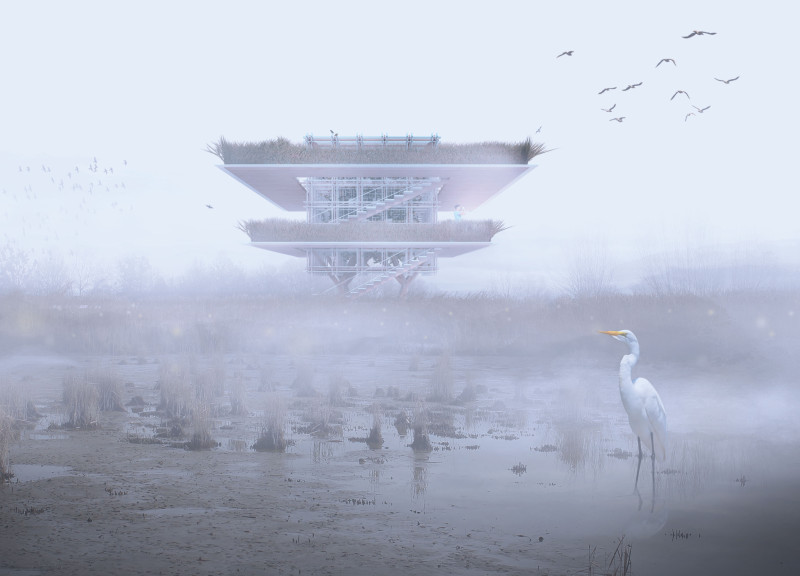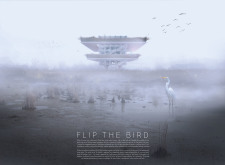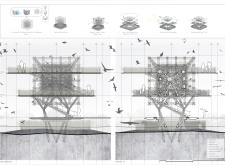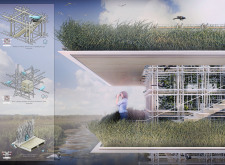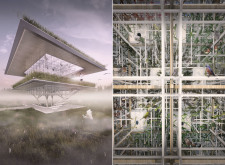5 key facts about this project
### Overview
Located in a dynamic environmental context, the project "Flip the Bird" serves as a nature observation platform focused on avian life. Its intent is to foster engagement with local ecology while creating a visually distinct architectural statement. The structure harmonizes with its natural surroundings, emphasizing the importance of biodiversity and conservation efforts through its design.
### Spatial Strategy
The design features an elevated structure that allows for unobstructed views of the wetlands, minimizing human disturbance to local wildlife. Multi-tiered platforms interconnected by open staircases enhance visitor interaction and adaptability to varying weather conditions. Each tier is strategically oriented to optimize observational opportunities, facilitating a connection between visitors and the natural environment.
### Materiality and Sustainability
The selection of materials emphasizes both aesthetic appeal and functional performance. Reinforced concrete provides a solid foundation, while a lightweight steel framework enables a multi-layered design without obstructing views. Extensive use of glass panels dissolves barriers between occupants and nature, enhancing visibility. Wood elements contribute warmth and comfort to the spaces. Additionally, the incorporation of vegetation on the roofs encourages biodiversity and integrates the structure with its surroundings. This approach not only fosters a coexistence with local wildlife but also addresses potential environmental concerns, such as flooding, ensuring the building's resilience and longevity.


